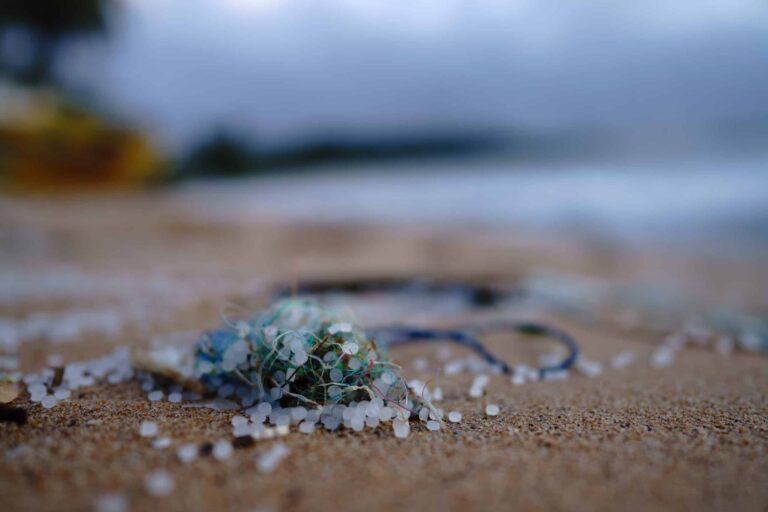Do you know that one of the biggest hazards to food safety today is plastic, which was created to make our life simpler and more convenient? The presence of microplastics in our food chain has become a major concern that needs to be addressed. We need to find a way to reduce plastic in the food chain.
Microplastics are tiny pieces of plastic debris no bigger than 5mm in size, and they can potentially enter the food chain via air, soil, and water. This seriously threatens our health, as we are consuming them unknowingly with our food. So, what can we do to reduce plastic in the food chain?
Table of Contents
How do microplastics enter the food chain
Microplastics are ubiquitous in the environment and are present in the air, soil, and water. These microplastics can be ingested by animals, which is then passed through the food chain to us.
Sources of microplastics in our environment include discarded plastic packaging, clothing fibers from washing machines, and car tyres that grind into tiny particles over time.
Commonly found microplastics in the food chain
Common microplastics found in the food chain include polyethylene (PE), polypropylene (PP), nylon, and acrylic. PE is commonly found in plastic packagings such as shopping bags and food containers. PP can be found in bottles and other containers used to store food and beverages.
The food-processing industry and fishing net manufacturers often use nylon, a synthetic material. Manufacturers use acrylic in fabrics, some cosmetics, and packaging materials.
All of these microplastics are a potential source of pollution in our environment. They can make their way into our food chain through human activities such as improper disposal or recycling of plastic products. Wildlife ingest microplastics as they accumulate in the environment, and ultimately, these microplastics can end up on our plates.
How do microplastics in the food chain affect us
Microplastics in the food chain can have a number of health impacts on humans. In their studies, researchers have extensively explored how microplastics can cause toxic effects by releasing chemicals that can be absorbed or ingested.
These chemicals can include endocrine disruptors (chemicals from plastics and other sources that interfere with hormones), which can affect the development of humans, as well as cause obesity, infertility, and cancer.
In addition to this, microplastics can also act as a vector for transferring bacteria or viruses from one organism to another. This could lead to an increase in food-borne illnesses and other related conditions, such as diarrhea and vomiting.
Furthermore, the ingestion of microplastics by animals can lead to physical blockages in their digestive systems and could potentially cause malnutrition or other health issues. Finally, as polystyrene and other synthetic materials often make up microplastics, humans may ingest carcinogenic compounds that could be harmful.
The 5 solutions to reducing plastic pollution in our food chain
Here are 5 solutions to reducing plastic pollution in our food chain.
1. Reduce consumption of single-use plastics
The first and most effective way to reduce your contribution to plastic pollution in the food chain is to reduce the consumption of single-use plastics. This involves refusing any environmentally damaging items such as plastic bags, straws, bottles, utensils, packaging materials, etc., and using more sustainable alternatives.
2. Increase recycling and reuse of plastics
By recycling and reusing plastics, we can reduce our contribution to plastic pollution in the food chain as well as give new life to existing plastic items. This can involve collecting used plastic bags or containers and recycling them or even simply keeping a few jars for reuse at home.
3. Switch to sustainable alternatives
We can reduce our plastic waste in the food chain by using sustainable alternatives such as reusable bags, stainless steel water bottles, and biodegradable packaging materials. These materials are more environmentally friendly and longer-lasting than single-use plastics, which helps reduce the need to buy new items constantly.
4. Reduce intake of highly processed foods
Highly processed foods often contain a lot of plastic packaging, which can contribute to plastic pollution in the food chain if not recycled properly. Therefore, reducing your intake of such products effectively reduces your personal contribution to this problem.
5. Switch to glass / stainless steel water bottles
Another way to reduce your contribution to plastic pollution in the food chain is by switching from single-use plastic water bottles to reusable glass or stainless steel options. These materials are more durable and better for the environment and help reduce costs since you won’t need to buy new plastic bottles constantly.
What can you do as an individual to solve the problem?
Microplastics also can potentially absorb toxins from the environment, increasing the risk of chemical contamination when consumed. In order to reduce their presence and potential for harm, it is crucial for us to understand how microplastics enter our food chain.
Some of these include reducing your consumption of single-use plastics, increasing recycling and reuse of existing plastics, switching to sustainable alternatives, reducing your intake of highly processed foods, and switching to glass/stainless steel water bottles.
By taking these steps, we can all help reduce plastic pollution in the food chain and make a difference in our environment. Additionally, as consumers, we should be aware of microplastic risks in our food supply and strive to purchase sustainable products whenever possible.
Read also: Great Pacific Garbage Patch, what is it and the solutions to treat it












